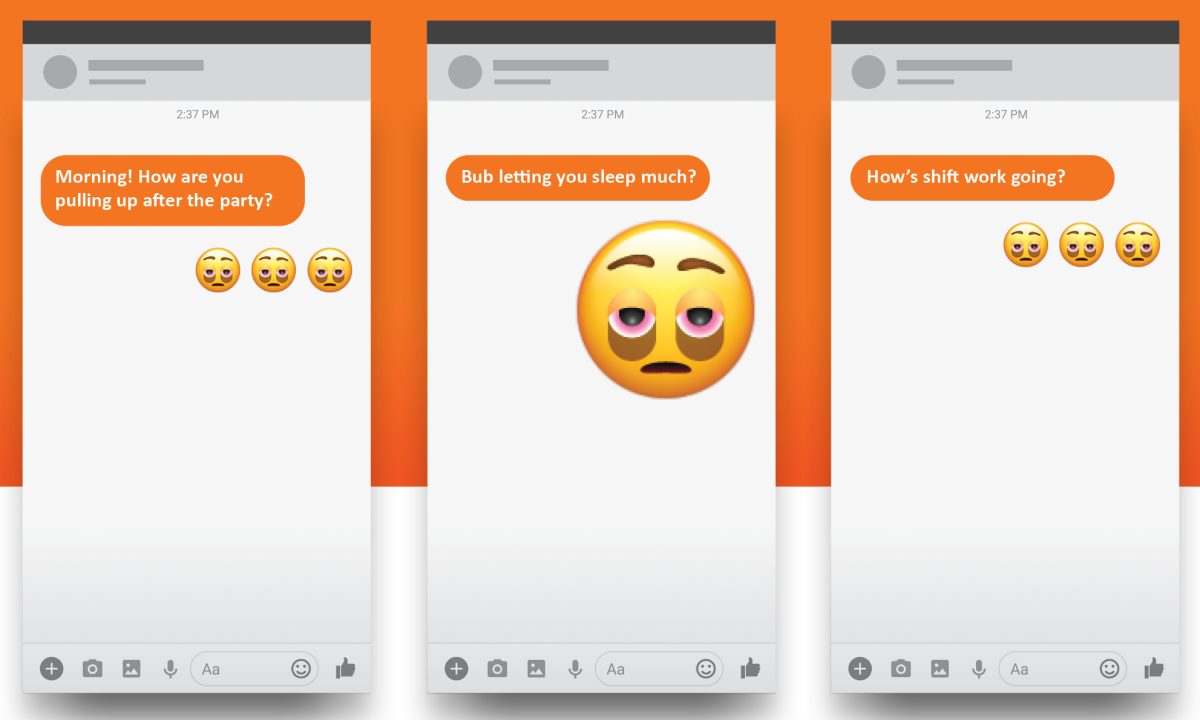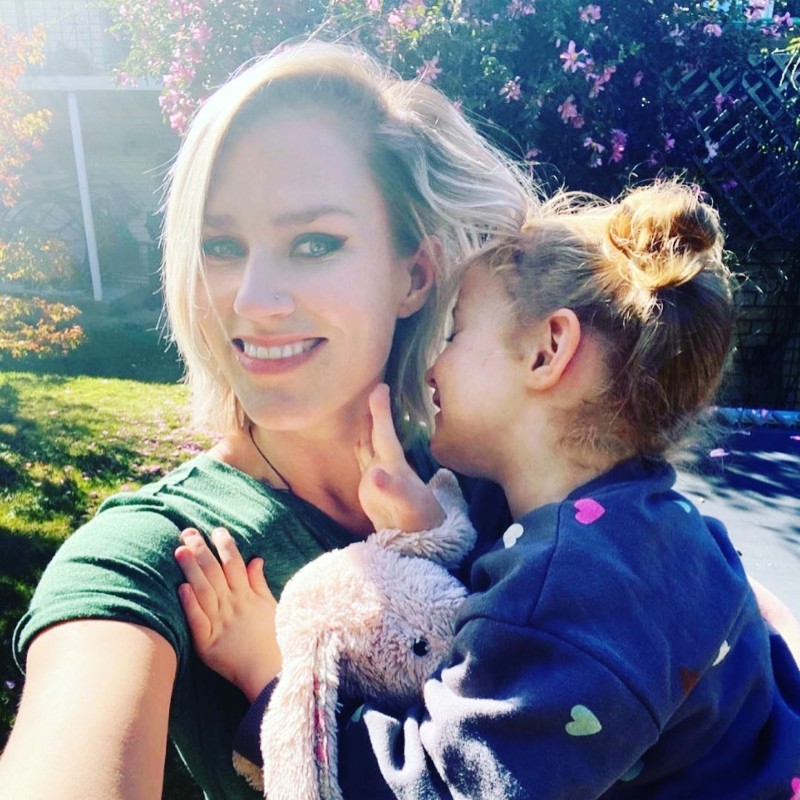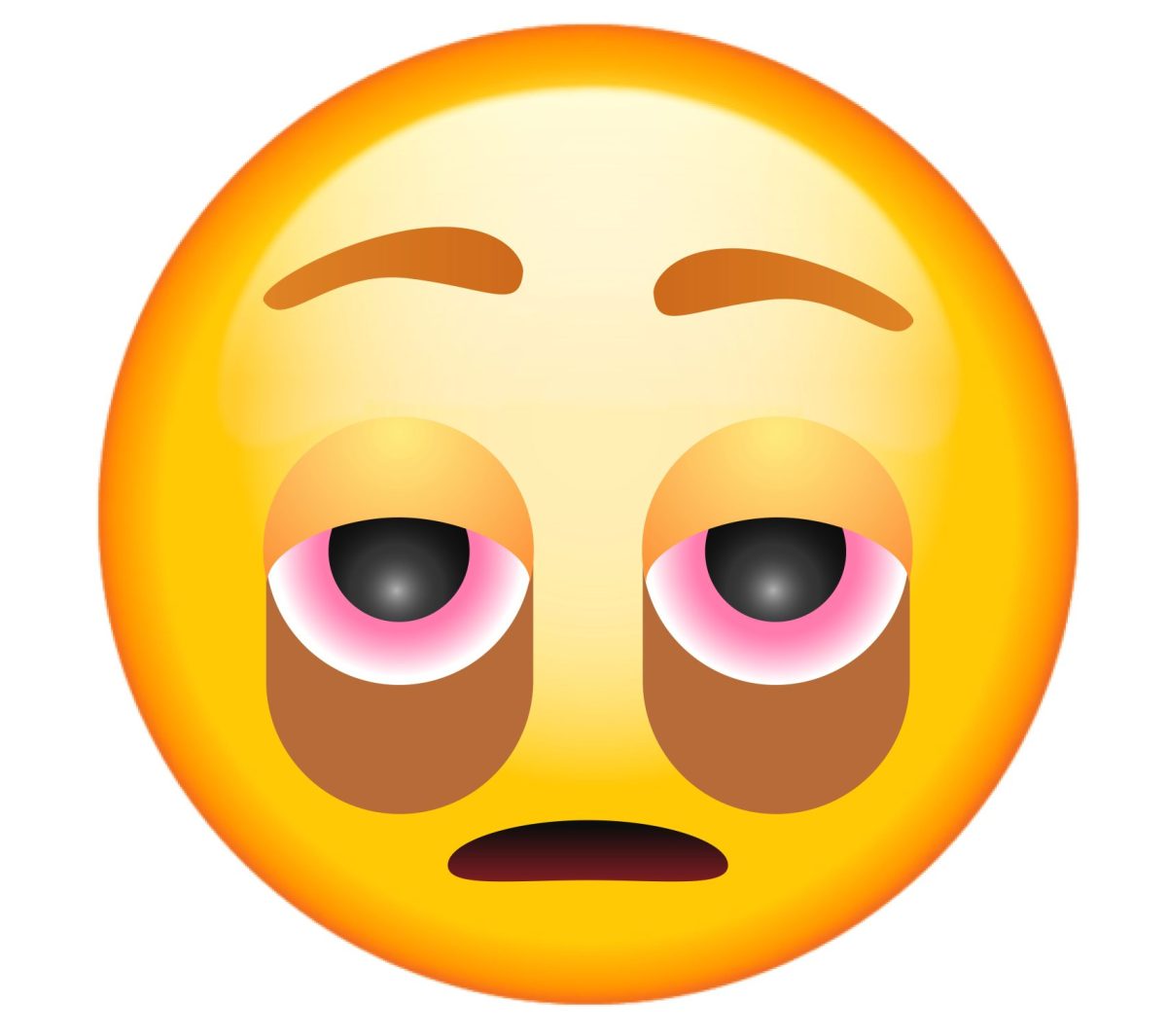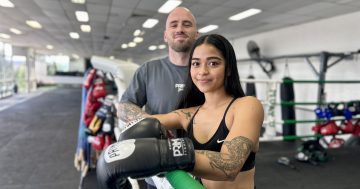
Erin Collett’s new tired emoji. Photo: Screenshot.
From the beginning of next year, you’ll have a new way to express just how worn out and tired you’re feeling.
The ‘exhausted, sleepy, tired’ face joins the official list of emojis employed by Apple, Google, Meta, Microsoft, Samsung and other companies after a Canberra woman’s design was approved by the international body that decides on the characters.
Erin Collett is a senior creative with Synergy Group Australia and crafts branding, strategy, copywriting, scripting and storyboarding for business campaigns and, once a year, is “pretty heavily involved” in work for the ABC advertising show Gruen.
In 2018, interrupted nights with her six-month-old daughter left her “sleep deprived”.
“I was trying to text someone and I was wondering where the haggard-looking emoji was,” she says.
“Like, where’s the one that looks so utterly defeated?”
This sent her down a rabbit hole that ended at the Unicode Technical Committee.
This not-for-profit, founded in 1988, manages the ‘Unicode Standard’, which is “the universal character encoding designed to support the worldwide interchange, processing, and display of the written texts of the diverse languages and technical disciplines of the modern world”, according to its website.
“There’s the emoji subcommittee as part of that group, and they are essentially the overlords who determine which emojis should make the cut,” Erin says.

Erin Collett and her daughter. Photo: Erin Collett, LinkedIn.
Anyone can submit a design, provided they can justify it using Google Trends data, and is also unique, timeless, easily recognisable in miniature form, and would be useful to the masses.
“It’s quite a technical process,” Erin says.
Using her expertise and software – and data on how there are 5.78 billion page results on Google for the term ‘baby sleep’, or more than double the results for the term ‘recipe’ – she submitted a proposal in December 2018.
“Surely the world’s child-wranglers, hungover partygoers, diehard students, and shift workers have also searched in vain for such an emoji,” she wrote in a LinkedIn post at the time.
“And what about the beauty industry? Don’t they need a ‘before’ face for their influencer Instagram posts?”

Erin Collett’s new tired emoji. Photo: Erin Collett.
Five years passed, and there was nothing.
“I thought it was long dead. I grieved it. I thought it was really cool, but maybe it just didn’t make it through for whatever reason.”
The Unicode website includes a registry of all submitted design proposals, but because the only emoji to have been recalled was the gun – replaced by a water pistol – and they only release two to six new emojis a year, it’s a slow process.
Only when a friend texted her last week did she receive the happy news.
“He saw an article about the emojis that are being released next and he recognised it.”
Dark eye bags are a key part of the design, paired with a droopy mouth.
“It’s not a happy-looking guy.”
Since then, it has received international media coverage from tech sites.
An author from The Verge commented on how “I think that eyebag one is going to make a frequent appearance in my group chats”, and a news writer for ITC plans to use it “when I ask for a vacation, or maybe for all work tasks”.
Beta testing on the new emoji will run until 2 July, when it will be officially approved and released.

The emoji was included in a release list on the Unicode website. Photo: Screenshot.
From there, it usually takes several months for smartphone manufacturers and tech companies to create their own versions, but in the case of Apple, it’s expected to feature in the iPhone keyboard when iOS 18 launches in March 2025.
Erin says she’s been so excited since hearing the news that she’s almost back where she started and unable to sleep.
“It’s such a small idea – a proposal that’s written over a few nights – but with such huge reach – going to something like 10 billion devices worldwide. I kind of feel like a bit of playful world domination.”
Will there be more?
“I kind of feel like I’ve ticked that box, and I really want to figure out what other area I could help with.”













